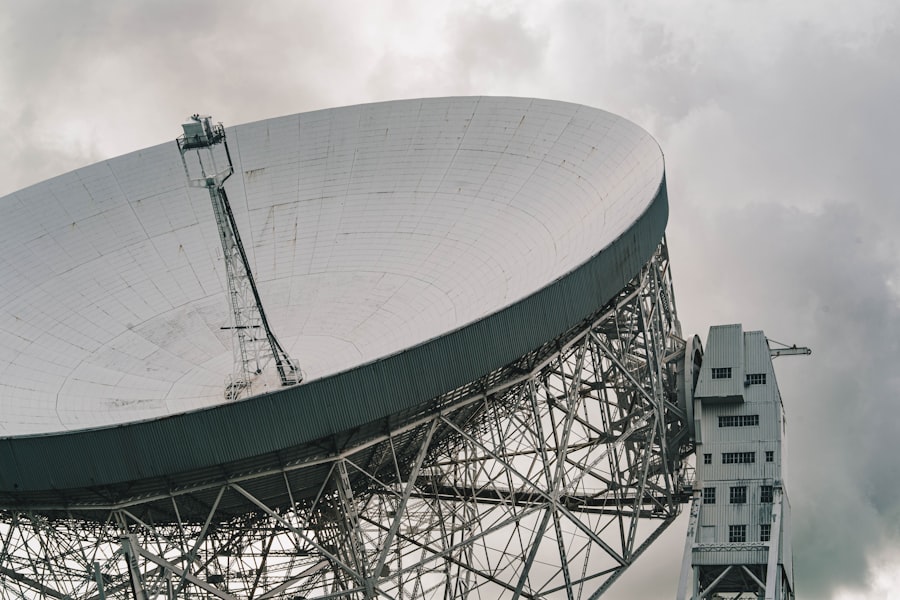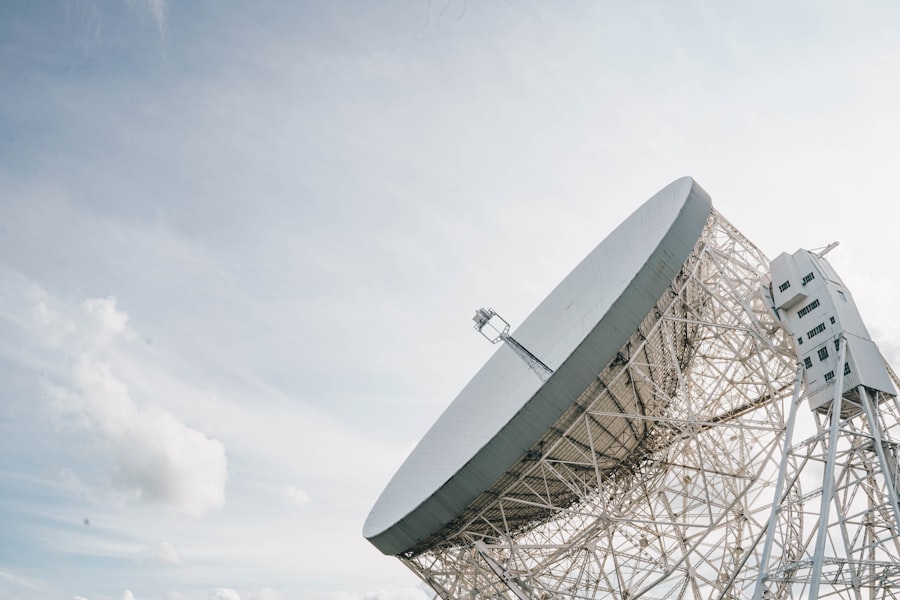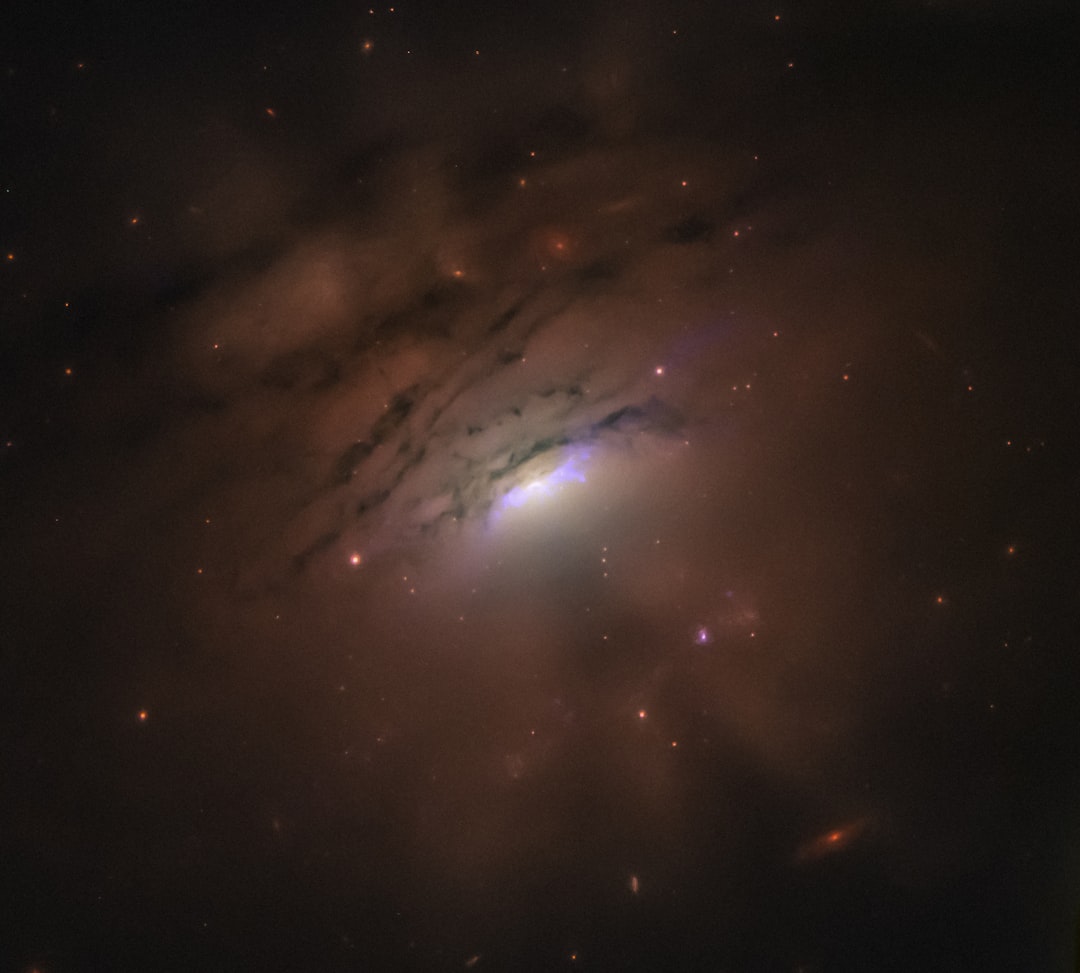Cosmic rays are high-energy particles that originate from outer space and travel through the universe at nearly the speed of light. These particles, primarily composed of protons, electrons, and atomic nuclei, are a subject of great interest in astrophysics due to their potential to provide insights into the fundamental processes of the universe. The study of cosmic rays dates back to the early 20th century when scientists first detected these energetic particles.
Since then, advancements in technology and observational techniques have allowed researchers to explore their origins, composition, and interactions with various cosmic phenomena. The significance of cosmic rays extends beyond their mere existence; they play a crucial role in understanding the dynamics of the universe. Their interactions with magnetic fields, for instance, can influence the behavior of these fields and contribute to the overall structure of galaxies.
As cosmic rays traverse different regions of space, they can also provide valuable information about the environments they encounter, including the conditions present in supernova remnants and active galactic nuclei. Thus, cosmic rays serve as both messengers from distant cosmic events and as agents that can shape the very fabric of the universe.
Key Takeaways
- Cosmic rays are high-energy particles that originate from sources outside the solar system and constantly bombard the Earth.
- Magnetic fields play a crucial role in shaping the universe and are present throughout space, influencing the behavior of cosmic rays.
- The interaction between cosmic rays and magnetic fields is complex and can lead to the deflection, acceleration, and confinement of cosmic rays.
- Cosmic rays have a significant impact on the shaping and evolution of magnetic fields in galaxies and throughout the universe.
- Observing the impact of cosmic rays on magnetic fields provides valuable insights into the processes that govern the dynamics of the universe.
Understanding Magnetic Fields
Magnetic fields are fundamental components of the universe, influencing a wide range of astrophysical processes. They arise from the motion of charged particles and are present in various celestial bodies, including planets, stars, and galaxies. The strength and configuration of magnetic fields can vary significantly, depending on factors such as the density of charged particles and the velocity at which they move.
In astrophysics, magnetic fields are often described in terms of their source—whether they are generated by a celestial body or arise from interstellar plasma. One of the most intriguing aspects of magnetic fields is their ability to interact with charged particles, such as those found in cosmic rays. This interaction can lead to complex phenomena, including the acceleration of particles and the formation of structures like magnetic loops and filaments.
Understanding these magnetic fields is essential for comprehending various astrophysical processes, including star formation, galactic dynamics, and even the behavior of solar winds. As researchers delve deeper into the nature of magnetic fields, they uncover new layers of complexity that reveal how these invisible forces shape the universe.
The Interaction Between Cosmic Rays and Magnetic Fields

The interaction between cosmic rays and magnetic fields is a dynamic process that has significant implications for both entities. When cosmic rays encounter a magnetic field, their trajectories can be altered due to the Lorentz force, which acts on charged particles moving through a magnetic field. This interaction can lead to deflections in the paths of cosmic rays, causing them to spiral along magnetic field lines rather than traveling in straight lines.
As a result, cosmic rays can be trapped within certain regions of space, leading to localized concentrations of high-energy particles. Moreover, this interaction is not merely a passive occurrence; it can actively influence the characteristics of magnetic fields themselves. For instance, as cosmic rays propagate through a magnetic field, they can induce currents that modify the field’s strength and configuration.
This feedback loop between cosmic rays and magnetic fields is crucial for understanding various astrophysical phenomena, such as the dynamics of supernova remnants and the behavior of plasma in active galactic nuclei. By studying these interactions, scientists can gain insights into the underlying mechanisms that govern cosmic ray propagation and magnetic field evolution.
The Role of Cosmic Rays in Shaping Magnetic Fields
| Metrics | Data |
|---|---|
| Number of Cosmic Rays | 10^9 – 10^20 particles per square meter per second |
| Magnetic Field Strength | 0.25 – 65 microteslas |
| Impact on Magnetic Field Alignment | Can align magnetic fields over large scales |
| Effect on Galactic Magnetic Fields | Can shape and influence the structure of galactic magnetic fields |
Cosmic rays do not merely interact with magnetic fields; they also play a pivotal role in shaping them over time. As high-energy particles traverse different regions of space, they can contribute to the generation and amplification of magnetic fields through processes such as dynamo action. This phenomenon occurs when the motion of charged particles generates electric currents that, in turn, create magnetic fields.
In this way, cosmic rays can act as agents of change within the magnetic landscape of galaxies. Additionally, cosmic rays can influence the turbulence within interstellar mediums, which is essential for understanding how magnetic fields evolve. The energy deposited by cosmic rays can drive shock waves and instabilities that alter the distribution and strength of magnetic fields in their vicinity.
This interplay between cosmic rays and magnetic fields is particularly evident in regions where star formation occurs, as the energy from cosmic rays can help regulate the collapse of gas clouds and influence the birth of new stars. Thus, cosmic rays serve as both catalysts and modifiers in the ongoing evolution of magnetic fields throughout the universe.
Observing the Impact of Cosmic Rays on Magnetic Fields
Observing the impact of cosmic rays on magnetic fields presents unique challenges for astrophysicists. Traditional observational techniques often rely on detecting electromagnetic radiation emitted by celestial objects; however, cosmic rays are primarily detected through secondary particles produced when they interact with matter or radiation. Advanced detectors placed at high altitudes or in space have been developed to capture these secondary particles and provide insights into cosmic ray properties.
Recent advancements in observational technology have enabled scientists to map cosmic ray distributions and their interactions with magnetic fields more effectively. For instance, ground-based observatories equipped with extensive air shower arrays can detect the cascade of secondary particles generated by high-energy cosmic rays entering Earth’s atmosphere.
Such observations are crucial for understanding not only cosmic ray behavior but also the broader implications for astrophysical processes.
The Effects of Cosmic Rays on Earth’s Magnetic Field

Earth’s magnetic field serves as a protective shield against cosmic rays, deflecting many high-energy particles away from the planet’s surface. However, some cosmic rays do penetrate this shield, leading to various effects on Earth’s atmosphere and surface environment. For instance, when cosmic rays collide with atmospheric molecules, they produce secondary particles that can contribute to ionization processes in the upper atmosphere.
This ionization can influence atmospheric chemistry and even affect weather patterns. Moreover, fluctuations in cosmic ray intensity can have implications for Earth’s climate over longer timescales. Some studies suggest that variations in cosmic ray activity may correlate with changes in cloud cover and climate patterns due to their influence on atmospheric ionization.
Understanding these connections is essential for comprehending how external factors like cosmic rays can impact Earth’s environment and climate systems. As researchers continue to investigate these relationships, they uncover new layers of complexity that highlight the interconnectedness of cosmic phenomena.
Cosmic Rays and the Formation of Galactic Magnetic Fields
The formation and evolution of galactic magnetic fields are intricately linked to cosmic rays. As galaxies evolve over time, they undergo various processes that generate magnetic fields, including star formation and supernova explosions. Cosmic rays produced during these events can contribute to amplifying existing magnetic fields or generating new ones through dynamo processes.
This interplay between cosmic rays and galactic dynamics is crucial for understanding how galaxies maintain their magnetic structures. In addition to contributing to magnetic field generation, cosmic rays can also influence the distribution and strength of these fields within galaxies. The energy deposited by cosmic rays can drive turbulence within interstellar gas clouds, leading to complex interactions that shape magnetic field lines.
These processes are particularly evident in regions where star formation is active, as cosmic rays help regulate gas dynamics and influence star formation rates. By studying these interactions within galaxies, researchers gain valuable insights into the mechanisms that govern galactic evolution.
Exploring the Connection Between Cosmic Rays and Solar Magnetic Fields
The Sun’s magnetic field plays a vital role in shaping solar activity and influencing space weather phenomena. Cosmic rays originating from outside our solar system interact with this solar magnetic field in complex ways. During periods of heightened solar activity, such as solar flares or coronal mass ejections (CMEs), the Sun’s magnetic field can become highly dynamic, affecting how cosmic rays propagate through the heliosphere.
When solar activity is intense, it can lead to increased shielding against incoming cosmic rays due to enhanced solar wind pressure and magnetic field strength. Conversely, during solar minimum periods when solar activity is low, more cosmic rays can penetrate into the inner solar system. This variability has implications for both space weather forecasting and understanding how solar activity influences Earth’s atmosphere and climate systems.
By exploring this connection between cosmic rays and solar magnetic fields, scientists can better predict space weather events that may impact satellite operations and communication systems on Earth.
The Influence of Cosmic Rays on Interstellar Magnetic Fields
Interstellar magnetic fields are shaped by a variety of factors, including stellar winds, supernova explosions, and cosmic ray interactions. Cosmic rays play a significant role in influencing these interstellar magnetic fields by depositing energy into surrounding gas clouds and driving turbulence within them. This turbulence can lead to complex structures within interstellar mediums that affect how magnetic fields are organized across vast distances.
Furthermore, as cosmic rays propagate through interstellar space, they can induce currents that modify existing magnetic field configurations. This feedback loop between cosmic rays and interstellar magnetic fields is essential for understanding how matter is distributed throughout galaxies and how star formation occurs within these regions. By studying these interactions at different scales—from local environments around stars to larger galactic structures—researchers gain insights into fundamental processes governing galaxy evolution.
Implications for Astrophysics and Cosmology
The study of cosmic rays and their interactions with magnetic fields has profound implications for astrophysics and cosmology as a whole. Understanding how these high-energy particles influence their environments provides critical insights into fundamental questions about galaxy formation, star evolution, and even dark matter interactions. As researchers continue to unravel these complex relationships, they contribute to a more comprehensive understanding of how our universe operates.
Moreover, investigating cosmic rays offers opportunities for interdisciplinary collaboration across various scientific domains—from particle physics to atmospheric science—highlighting the interconnectedness of different fields within science itself. As new observational techniques emerge alongside theoretical advancements in modeling these interactions, researchers are poised to make significant strides toward answering some of astronomy’s most pressing questions.
Future Research and Discoveries in Cosmic Rays and Magnetic Fields
The future of research into cosmic rays and their relationship with magnetic fields holds great promise for uncovering new discoveries about our universe. Ongoing advancements in observational technology will enable scientists to probe deeper into previously inaccessible regions of space while improving our understanding of high-energy particle behavior under varying conditions. Additionally, upcoming missions aimed at studying solar activity will provide valuable data on how solar magnetic fields interact with cosmic rays.
As researchers continue to explore these complex interactions across different scales—from local environments around stars to vast galactic structures—they will undoubtedly uncover new insights that challenge existing paradigms within astrophysics and cosmology. The interplay between cosmic rays and magnetic fields remains an exciting frontier for scientific exploration—one that promises to deepen humanity’s understanding of its place within an ever-evolving universe.
Cosmic rays, high-energy particles from outer space, constantly bombard Earth, and their interaction with the planet’s magnetic field is a fascinating area of study. The Earth’s magnetic field acts as a protective shield, deflecting many of these cosmic rays and reducing the exposure that life on Earth experiences. This interaction is crucial for understanding both the potential risks of cosmic ray exposure and the protective benefits of the magnetic field. For a deeper dive into how cosmic rays and magnetic fields interact, you can explore a related article on this topic by visiting Freaky Science. This resource provides insights into the latest research and findings in the field of cosmic ray studies.
WATCH THIS 🌍 Earth’s Magnetic Field Is About To Flip: The Crisis You Need to Know
FAQs
What are cosmic rays?
Cosmic rays are high-energy particles, mainly protons and atomic nuclei, that originate from outer space and travel through the universe at nearly the speed of light.
How do cosmic rays affect humans?
Cosmic rays can penetrate the Earth’s atmosphere and reach the surface, where they can interact with the human body and potentially cause damage to cells and DNA, increasing the risk of cancer and other health issues.
What is cosmic ray exposure?
Cosmic ray exposure refers to the amount of cosmic radiation that an individual is exposed to, which can vary depending on factors such as altitude, latitude, and solar activity.
How does Earth’s magnetic field protect us from cosmic rays?
Earth’s magnetic field acts as a shield, deflecting many cosmic rays away from the planet and reducing the amount of radiation that reaches the surface.
What are the effects of magnetic field on cosmic ray exposure?
The strength and orientation of Earth’s magnetic field can influence the amount of cosmic radiation that reaches different regions of the planet, with higher latitudes experiencing greater exposure due to the magnetic field’s shape.
How do scientists study cosmic ray exposure and magnetic fields?
Scientists use instruments such as cosmic ray detectors and magnetometers to measure and analyze cosmic ray exposure and the effects of Earth’s magnetic field, helping to understand the risks and develop strategies for protection.
